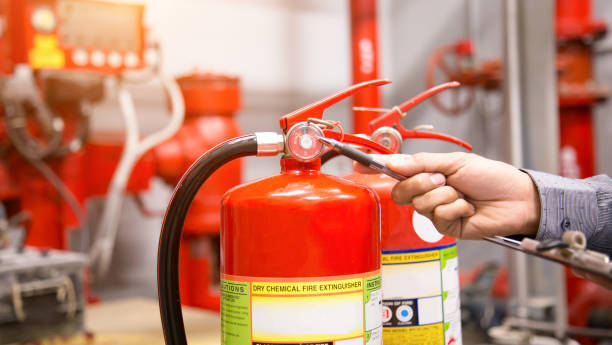- 1-905-452-8193
- Contact Us
- Member Login
- Get Listed Today
- 220,911 members

Fire extinguisher testing is a process that is conducted to ensure that fire extinguishers are working properly and meet the required standards. The test includes a visual inspection, functionality test, and pressure test. It is important for testing and tagging Melbourne service providers to conduct regular fire extinguisher inspections to ensure that they are in good working condition and will be able to perform their intended function in the event of a fire.
Visual inspection is the first step in fire extinguisher testing. This involves checking the fire extinguisher for any damage or corrosion. The extinguisher should be free of any dents, cracks, or other damage that could prevent it from working properly. The inspector will also check to see if the labels and instructions are still legible and visible.
Functionality testing is the next step in fire extinguisher testing. This test is conducted to ensure that the fire extinguisher will work as intended when it is needed. The functionality test includes a full discharge and a recharge of the fire extinguisher. This ensures that the fire extinguisher can hold a full charge and that it will discharge correctly when it is needed.
The last step in fire extinguisher testing is the pressure test. This is conducted to ensure that the fire extinguisher can maintain the proper pressure. The pressure test includes a check of the gauge and a check of the internal parts of the fire extinguisher. This ensures that the fire extinguisher is safe to use and will function properly in the event of a fire.
As important as fire extinguisher testing is, it also comes with the following myths that must be disproven.
Myth: Fire extinguishers need to be tested every year.
Truth: Depending on the type of fire extinguisher, they may only need to be tested once every 5-12 years. Check your fire extinguisher's label to see how often it needs to be serviced.
Myth: Fire extinguishers can expire.
Truth: While the materials inside a fire extinguisher can degrade over time, the extinguisher itself does not have an expiration date. As long as it is properly maintained, a fire extinguisher can last for decades.
Myth: Fire extinguishers need to be replaced after they are used.
Truth: If a fire extinguisher is used, it should be refilled and recertified by a professional. Most fire extinguishers can be reused multiple times.
Myth: All you need to do to test a fire extinguisher is pull the pin and hold down the lever.
Truth: This will only tell you if the extinguisher is still pressurized. To properly test a fire extinguisher, you need to discharge it into an appropriate container (such as a sink or bucket).
Myth: You need special training to test a fire extinguisher.
Truth: While it is always best to consult with a professional, you can test most fire extinguishers yourself with just a few simple steps.
Myth: Discharging a fire extinguisher will damage it.
Truth: As long as you follow the manufacturer's instructions, discharging a fire extinguisher will not damage it. Regular discharge and maintenance tests are necessary to keep your extinguisher in good working condition.
Myth: You should only use water to test a fire extinguisher.
Truth: Water can damage some types of fire extinguishers. Always consult your extinguisher's label to see what type of agent it uses, and discharge it into an appropriate container.
Myth: You need to use all of the extinguisher's contents to test it.
Truth: You only need to discharge enough material to ensure that the fire extinguisher is working properly. Discharging the entire contents of the extinguisher is not necessary, and is a waste of resources.
Myth: All fire extinguishers are filled with the same thing.
Truth: There are many different types of fire extinguishers, each filled with a different type of agent. Water-based extinguishers are for Class A fires, while dry chemical extinguishers are for Class B and C fires. Always consult your fire extinguisher's label to see what type of agent it uses.
Testing your fire extinguisher is an important part of maintaining a safe home or workplace. By dispelling these myths about fire extinguisher testing, you can ensure that your extinguisher is ready to use when you need it most.
